#avian welfare
Text
Urgent Call To Action. Deadline Monday Apr 13 at 5 pm for the Upcoming SEAC meeting
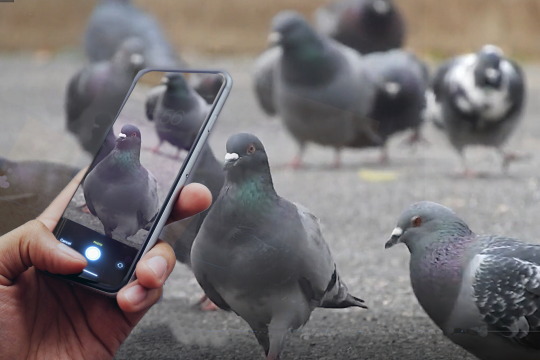
View On WordPress
#Avian#avian control#avian ecology#avian management#avian poisoning#avian safety#avian welfare#Avicide#Avitrol#Avitrol dangers#Avitrol effects#Avitrol regulations#Avitrol risks#Avitrol toxicity#Avitrol use#Avitrol warnings#Avitrol website#bird behavior#bird conservation#bird control#bird deterrent#bird distress#bird ecology#bird health#bird management#bird mortality#bird poison#bird poisoning#bird population#bird repellent
0 notes
Text
Avian flu crippling California poultry farms. Will prices go up? - Los Angeles Times
"Poultry at nine sites in southern Sonoma County have been infected with the virus, requiring more than a million birds to be euthanized to prevent further spread, according to the county."
The word euthanize, as defined in dictionaries, is not a practice done to healthy animals to prevent the spread of disease. And it is supposed to be a painless death whereas though the article doesn't mention it, Ventilation Shutdown Plus heat is being used in California, with millions of birds being basically roasted to death.
#animalrights#animal welfare#animal rights activist#animal advocacy#activist#activism#avian flu#california
0 notes
Text
#Migratory Bird Conservation#Bird Protection Initiatives#Light Pollution Awareness#Campus Wildlife#Yale University#Bird Migration Support#Environmental Awareness#Wildlife Conservation Events#Bird Honor Mass#Avian Welfare Efforts#birding#birdwatching#birdphotography#birds#backyard birds#ornithology#bird#birdlovers
1 note
·
View note
Text
Reven’s 1000 Followers Coining Event!
[pt: Reven’s 1000 Followers Coining Event! /end pt]
we hit 1000 followers recently(-ish) and wanted to do a coining event to celebrate!
Basic Info:
1) use the tag ‘rev1000event’ and/or @ us in your posts
2) all term types (except transx/transid) can be coined for this
3) this event has no set dates and can more or less be used as a prompt list ^^
each day has 3 prompts, you can choose to use just one or combine them, and you can also combine them with the alternative prompts
Prompts:
Day 1: clouds, sunsets/sunrises, daylight/sunlight
Day 2: death, observation, (being) undead
Day 3: electricity, (thunder)storms, lightning
Day 4: parkour, wings, avian instincts
Day 5: film, cameras, main characters/protagonists
Day 6: purple, space, cats/being a cat
Day 7: dethereal aesthetics, fire, dark academia
Day 8: flowers, trees, fruit
Day 9: pink, bows, auroracore
Day 10: darkness, the cold, rain
Alternative Prompts:
desire
the sun/sun imagery
revenants
chaos
celestial
blood/gore
cervitaurs/centaurs/driders/arachne/etc.
magic
zenith (the time at which something is most powerful or successful; the point in the sky or celestial sphere directly above an observer)
eudaimonia (the state or condition of 'good spirit', and which is commonly translated as 'happiness' or 'welfare')
tagging (no pressure to participate, and feel free to ask to be untagged): @radiomogai , @local-yurei , @honey-makes-mogai , @gender-mailman
#coining event#mogai event#we didnt post this sooner cause of ~ avpd ~ but we're good now#rev1000event#🌊 talking#🐟 events
32 notes
·
View notes
Text
The Palatium Royalty

The Palatium Kingdom:
—————————————————————
The 1st Quadrant/The Princeps -
Rulers: Emperor Lexus, Empress Ecpe & Prince Rew
The 1st Quadrant is the most powerful quadrant in the Palatium Kingdom. The rich inhabit this kingdom and many grand and elegant buildings are seen in the quadrant. Every street has ‘Ignis Silk’ lampposts that help ward off the ‘Odiums.’ (Odiums are monsters that have been crawling this world for centuries. They infect citizens by biting or stinging. You can tell if someone is infected by seeing indigo, inflamed veins and more violent tendencies. One can ward away these monsters with fire. More posts about Odiums will be made.) The 1st quadrant also has the most temples to the gods. A special landmark is the Phoenix Temple, a church that has been said to have the greatest connection to the fire god. The Princeps also has the 2nd most prestigious school in their world, only being beat by the Marine Kingdoms school of royals.
Stereotype- often seen as the most snobby of the quadrants. Records list Prince Rew as a, ‘rich spoiled brat.’
============================
The 2nd Quadrant/ The Ariatis -
Rulers- King Loi, Queen Cecla, Prince Axel and Prince Col
The 2nd Quadrant is the poorest of the quadrants. Their kingdom is the only quadrant that has welfare and donates to the poor. Has the most refugees from the Caverns. (The Caverns is the most corrupt kingdom, there is no government and has many gangs and mafias that take charge of territories in the kingdom. Rumored that kingdoms like the Princeps and the Marine Kingdom exile their poor or prisoners to the Caverns.) Has the largest population of the quadrants due to the mixed citizens of Avians and Inscetians (Inscetians are a human and insect hybrid, ex: human/tarantula, human/bumblebee etc… often looked down upon by other hybrids.) Also has the most hospitals with free healthcare. They strive to find the cure for an infected bite by an Odium. However nothing has been found so they resort to a merciful quick death.
Stereotype: seen as to soft and would easily been taken over. However, records depict of Prince Axel being stubborn and a rebel, often arguing and fighting Prince Rew. This has tainted the families picture even more due to the Prince being adopted from an unknown sponsor.
============================
The 3rd Quadrant/ the Laveo-
Rulers: Queen Pō and King Wes
This kingdom has the least amount of residents. The taxes are hard in this kingdom. However the laws are light in this quadrant and many drugs and crime are seen as legal in this quadrant. There is only one court in this quadrant and the judges are the rulers themselves. Due to the high esteemed judges, no crimes are brought to justice due to the judges being unable to attend. No temples, hospitals or schools are in the kingdom which causes the citizens to have the lowest reading and writing population out of the 3 quadrants. When the youn citizens don’t have rich parents they are often sent to the army where they are trained into viscous flying warriors that guard the borders to not let any illegal refugees cross.
Stereotype: the whole kingdom is seen as lazy snobs. And those who aren’t rich have to be burdened with their unwillingness to help at all. The citizens are also the most openly racists to Iscetians.
9 notes
·
View notes
Note
I saw your post about your new lady being a bit pale from living indoors- is that just a Lack Of UV problem? Are there welfare issues for indoor only poults? Can they be abated by providing full spectrum lighting, like for reptiles? (Or. Like. Jon avian reptiles, I suppose).
I’d imagine UV would probably help. @homeofhousechickens probably knows more about this. All I know is that I keep my birds outdoors and they seem healthier for it. I don’t think keeping chickens indoors is necessarily cruel but it’s not something that I’m interested in doing long term.
26 notes
·
View notes
Text
This is my entry for @whumpril alt. prompt #6: blanket nest!
Content warnings: past abuse and conditioning. Let me know if you want anything added!


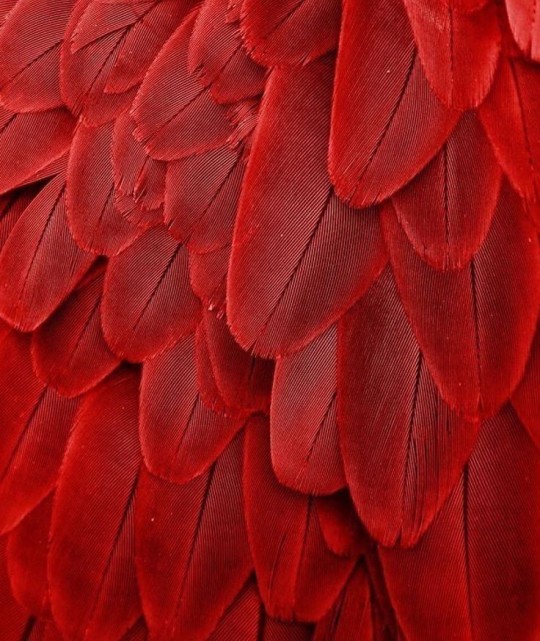
When Dan woke up, it was — he blinked hard to bring the clock into clarity — 2:30 am. It was 2:30 am and he was awake for no discernable reason.
Maybe the Mexican takeout he’d had for dinner had given him a weird dream, and he just couldn’t remember it. Accepting that enchiladas were the cause of his early awakening and ready to attempt to fall back asleep, he rolled over, but was met with a startled squeak.
His roommate, Ruby, was standing in front of his half-opened closet. Her colorful wings fluttered anxiously, muted by the dark, and she circled a fist over her chest.
Ruby was an avian hybrid who had been kept as a pet by an abusive owner for many years. Thankfully, the organization Advocates for Hybrid Welfare had gotten her out of that situation. Dan’s brother, who worked for AHW, had called him, explaining that he had a hybrid who didn’t qualify for the organization’s assisted living program, due to the fact that she had been kept as a trophy pet and thus was in good physical condition, but clearly wasn’t yet ready to live independently. Then, he sheepishly asked if he’d ever considered sharing his apartment with a roommate.
Due to the way she had been conditioned to act as a pet, Ruby often had difficulty using her own words. To combat this, she and Dan started learning sign language. However, as neither of them had any prior experience, it was pretty slow going. So far, they’d only gotten through the colors of the rainbow, and a few civilities such as ‘please’, ‘thank you’, and ‘sorry’ — the latter of which being what she was signing right then
“What’re you sayin’ sorry for?” he asked, voice rough with sleep.
“Sorry for…” she trailed off and shuffled towards the door.
“You wanna show me?” he clarified.
“Wanna.” She nodded tightly.
“Lead the way,” he said, clambering out of bed. He followed her out to the living room, where he was met with an intricate pile of pillows. Upon further examination, she had laid them out in a ring shape and laid a bunch of blankets over top, forming a nest shape. “Hey, that's cool. Why were you apologizing?”
“Bad bird,” Ruby muttered, rocking back on her feet. “Look what you did. Made a mess! Clean it up right now!” She got increasingly agitated, her mumbles turning to shouts.
“Hey, it’s okay, I’m not mad at you. You haven’t done anything wrong, and you don’t have to clean it up yet,” he rushed to assure her. “I’m guessing that you wanted to get the spare bedding from my closet, and that’s when you accidentally woke me up?”
She nodded, looking desperately contrite.
“Okay, how’s this sound?” Dan said through a yawn. “You go grab the stuff you wanted from my room, and I’ll make some tea for us, and then we can get all cozy in your nest and drink it.”
“Go grab the stuff,” Ruby agreed, still hesitant, but hey, progress is progress.
“Awesome,” Dan said, heading to the kitchen. He grabbed a kettle from the cupboard and held it under the faucet. The white noise created by the water filling it was almost enough to put him asleep, so he splashed a bit on his face to help wake himself up. Then he set the kettle on the stove to boil.
He cracked a grin when he heard her shuffling down the hallway, weighted down by a pile of blankets, but they both startled when the kettle shrilly announced that the water was boiling. He turned off the element and began ruffling through the cupboards. “Would you rather have… peach mango or blueberry pomegranate?” he called to Ruby, who was in the living room adding the finishing touches to her blanket nest.
“Blueberry pomegranate,” she responded after a moment of deliberation.
He squinted at the box. “Ah, good choice. It says here it ‘promotes good sleep.’ I think we could both use that, hey?”
“What’re you sayin’ sorry for?” she echoed his earlier question. “Sorry for!”
“‘S all good, you don’t need to apologize for waking me up.” He added a tea bag and spoonful of honey to both mugs.
Once it seemed enough color had soaked into the water, he carried the mugs over to where Ruby was sitting perched in the truly impressive nest she’d created. “I didn’t even know we had that many pillows,” he said, handing one of them over to her. She accepted it with a happy coo and he sank down beside her. Dan sipped his own beverage. He’d never been a tea drinker before, but he’d bought some for Ruby, and she was slowly converting him.
They sat in the nest sipping their tea together, the soft atmosphere only compounded by the rain that had begun to fall outside.
Dan’s eyelids were drooping, but he at least had the presence of mind to set his half-finished drink to the side so he wouldn’t spill it in his sleep. He shifted so that he was laying down, his head against one of the many pillows.
As he drifted off, he felt the sensation of fingers carding through his hair and scratching gently at his scalp.
#winged whumpee#hybrid whumpee#lady whumpee#male caretaker#cozy vibes#whump#whumpril#whumpril2024#blanket nest#caretaker talks#whumprilday23
4 notes
·
View notes
Text
We're seeing some scary developments in the spread of avian flu - it's now in dairy cattle populations and recently spread to a human.
Make no mistake - this is the result of mass animal agriculture. We need to scale down livestock population densities, yes, for the welfare of animals but also for the health of humanity.
The animals suffocating from ventilation being turned off to cull sick livestock - may they be happy, may they be free.
The human workers exposed to diseased animals - may they be free from illness, may they be happy and free.
It is the nature of sentient beings wandering in this samsara to fall ill, but there are ways we can mitigate this suffering. May all beings be happy, and may they be free.
Namo Buddhaya, Namo Dhammaya, Namo Sanghaya 🙏🙏🙏
#buddhistmusings#philosophy#religion#buddhism#disease#virus#animal liberation#animal rights#animal welfare#compassion
3 notes
·
View notes
Note
You said you're on facebook, do you have any recommendations on animal welfare pages to follow? Including meme pages
zookeeper memes for critically endangered teens is funny. National Audubon society, wolf conservation center, world bird sanctuary, chintimini wildlife center, Teton raptor center, Blackland prairie raptor center, natures educators, the association of zoos and aquariums, the raptor center, Carolina raptor center, cascades raptor center, hawkwatch international, Oregon coast aquarium, fossil rim wildlife center, black creek wildlife center, raptors are the solution, avian conservation center of Appalachia, Monterey bay aquarium.
#Those are just the ones I remember that I followed#I’m sure there are more that I’m just not thinking of
58 notes
·
View notes
Text

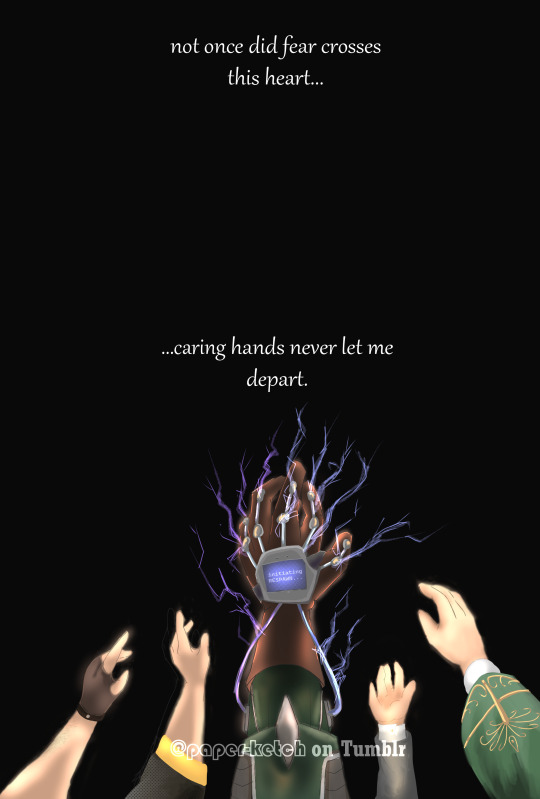
something something no one's afraid to do dangerous stuff on hc because there is always someone ready to save them if things go south. (click image for better resolution)
rewatched grian's early days in hc when he's still learning how to fly, had an idea, executed said idea, bon apetit.
wordless version of the first image + me ramblingexplaining about grian's wing colour and the gadget xisuma is wearing undercut

The White Wings
have you seen that one video where the person shows how to humanely kill a squid, and when it dies, it's skin changes from clear to white/cream-ish colour? this is what i'm talking about if you're wondering (content tag: animal death)
i like to think that it's the same thing with elytra.
Each players has their own design when it comes to their wings (both avian-themed and insect-themed), but when it breaks, it returns to the default greyish ombre like the icon.
which is why Grian's wings are white here. it's supposed to have the same colours as a parrot, but it broke.

Xisuma's gadget
the idea is inspired by redcursive's xisuma in their Hermit Canyon AU (very fun fic, you should check it out!)
the gadget is an attachable handheld screen that's connected to the server. the gadget is voice-activated, think of it like alexa or siri. it has many functions;
it allows Xisuma to supervise the server's welfare, informing him if the area he's entering has a high level of lag/anomalies
it can give coordinates to locations he wants to go to (within certain limits)
it can also be used as display for chatbox
it allows Xisuma to distort the server's fabric of reality/physics, as shown in the image. The exoskeletons around the fingers of the glove gave him the ability to physically touch/manipulate the said fabric.
The electric sparks are there because Xisuma summoning a 'net' to save Grian's soul, and respawn him safely back to his base.
The purple and blue wires connected to Xisuma's suit are indicators of his admin powers coursing through him, which in turn powers the gadget as well.
Why only soul? Long story short, that is the only thing a player need to respawn again, which is why their physical bodies always disintegrates whenever they die
welp, i'm sleepy. thanks for reading! <3
#grian#grian fanart#iskall85#impulsesv#xisumavoid#mumbo jumbo#goodtimeswithscar#hermitcraft#hermitcraft fanart#hermitblr#fanart#paper ketch art#paper-ketch art
111 notes
·
View notes
Text
*shakes the world* WILL SOMEONE TELL ME IF ITS REALISTIC / PRACTICAL TO GO INTO A FIELD FOR RESEARCHING AVIAN BEHAVIOR / WELFARE WHILE STILL OWNING BIRDS SO I CAN MARK IT ON OR OFF MY PLANS LIST REEEEEEEEEEEEEEEEEEEEEEEE *dies*
*rises out of the ground and pouts*
Fineeeee....
I'll go message my contacts that I definitely actually have that I've just not been asking because I've been busy thinking about other things and delaying my decision and also avoiding the chance at hearing "no" even though I'm not committed to it just because I like passing the concept around
13 notes
·
View notes
Photo

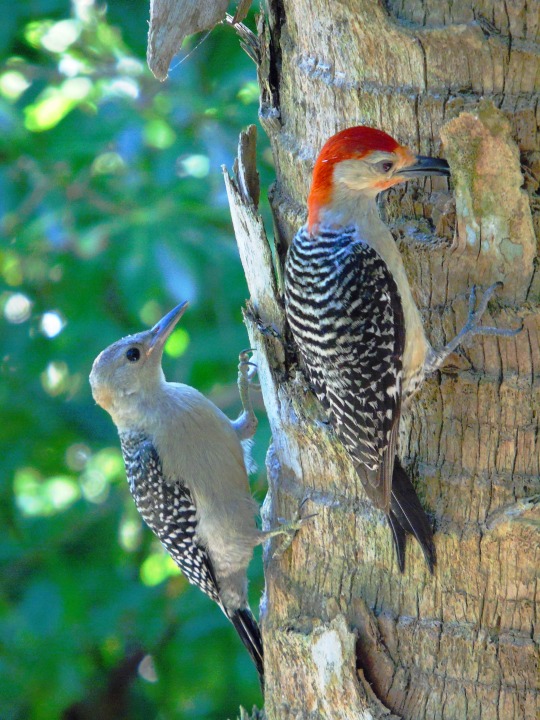







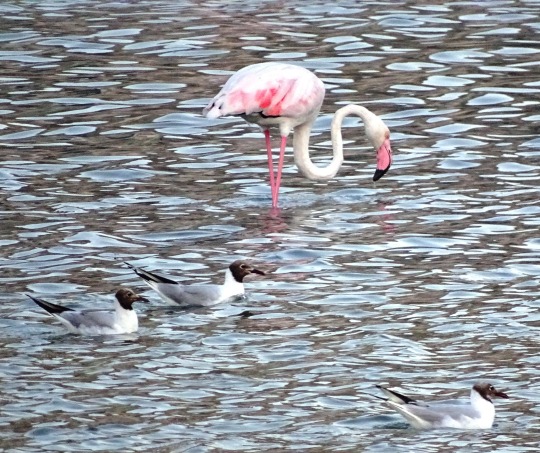
National Bird Day
Don your binoculars to spy these feathered friends in the wild, contribute to conservation efforts or raise awareness of birds in captivity.
The world is filled with a plethora of different species of birds. From cardinals to doves, from parakeets to parrots. Different people have different relationships with the various species of birds. As such, one could easily imagine that there could actually be numerous National Bird Days in the world, serving different purposes and perhaps varying by region.
What this day refers to, however, is known as National Bird Day, observed primarily in the United States. This is a bit different from occasions such as International Migratory National Bird Day, World Migratory National Bird Day, National Bird Day (UK), and several other National Bird Days which do not follow the same etymology as “turkey day”.
It is also worth noting that each of these is named for those avian friends, not the late Senator Robert Byrd!
The ‘National’ term might be a bit deceptive here, since it’s not actually a national holiday in the United States. For a day to technically be a national holiday, an Act of Congress is required, and there is no evidence that has ever happened. That being said, this delightful day is still popularly known as National Bird Day, regardless of whatever Congress might think of that.
So get ready to learn about and celebrate National Bird Day!
History of National Bird Day
Back in 1894, Charles Almanzo Babcock, the superintendent of schools in Oil City, Pennsylvania, declared the first holiday in the United States to celebrate birds. Babcock was passionate about the idea of advancing bird conservation as a moral value and it seems that his idea for the day caught on. Babcock’s National Bird Day eventually turned into what is now known as International Migratory National Bird Day, which is celebrated in May.
That day is not actually related to this National Bird Day, though, in terms of history. This particular version of National Bird Day was created as it marked the end of the annual Christmas Bird Count in the mid-21st century.
National Bird Day has been dedicated at least in part to raising awareness about birds that are held in captivity. This day is a project of the Avian Welfare Coalition, which works hard to raise awareness for birds that are captured or produced in captivity for either profit or amusement of humans.
Presumably that includes Aunt Marjorie’s parrot, the penguins in the Columbus Zoo, and that turkey that made the ultimate sacrifice to grace the family’s dinner table for Thanksgiving back in November. After all, a holiday that marks the end of three weeks of focusing on wild birds that occurs during the Christmas Bird Count would appropriately focus some attention on captive birds.
The goal of the day is to educate folks on the destructive tendencies of the bird trade, the cruelty of bird breeding mills, and ideas for helping and improving the lives of birds that are already living in captivity.
How to Celebrate National Bird Day
Looking for ideas on how to celebrate National Bird Day? Well this list is a great way to begin. Try out some of these ideas or come up with some of your own:
Learn More About Birds
Birds are important for a variety of reasons. They are a valuable part of nature’s ecosystem. Many of them sing and quite a few of them even look pretty! Of course, many species of birds are also eaten by humans, but it does seem that it might be a little inappropriate to go quail hunting in honour of National Bird Day, no matter how delicious quail might be.
Visit Unique Birds in Their Natural Habitats
Forgo the zoo and head on over to places where the birds actually live and thrive in their natural habitats. For some bird lovers, this could simply mean taking a walk in the forest with some bird watching glasses to spot some unique creatures.
For others, this might mean building an entire vacation to an exotic place to see tropical birds in their natural homes. Many different Eco-tour companies will offer limited viewing opportunities for those who want to travel around the world to see parrots in Guatemala, Tenerife, Belize, Honduras and more!
Help with Bird Conservation
Raising awareness, getting involved and making a donation are all ways that bird lovers can celebrate National Bird Day. Host a charity event or party to let friends and family enjoy an evening while learning about the important reasons behind National Bird Day. Get together for a meal, watch a documentary, and then let people know about these ways they can make a donation to these important support bird conservation efforts:
Indonesian Parrot Project
Helping protect endangered parrots and cockatoos from trappers, smugglers, transporters and traders.
Hatched to Fly Free
This organization works to breed and then release beautiful, colorful macaws in the nation of Costa Rica.
One Earth Conservation
Empowering people to save the planet, this organization helps to educate and build programs to love nature, with a specific focus on parrots.
Visit the National Bird Day Website
There’s also a website at National Bird Day, for those who want to learn more about the folks who are actually promoting this day, this website is a great place to start. It’s filled with resources and information to educate adults and children about the difficulties faced by so many birds in captivity today.
Get Educated on the Risks of Bird Extinction
On a serious note, approximately 12 percent of the world’s bird species could face extinction in the next century, if things continue on as they have been. That includes nearly a third of the 330 different species of parrots.
Things don’t look a great deal better for numerous species of songbirds, not to mention some penguin species and others, like the kiwi bird. The largest components of these threats of extinction are habitat destruction and pet trade. A great idea for celebrating the day would be learning about all of the wonders of birds, then helping to educate friends and family members about their plight. Because the survival of the world’s birds hinges on public awareness as well as support for conservation efforts all over the world.
Source
#pelican#Pacific Ocean#California#Brewer's Sparrow#Nevada#summer 2022#wildlife#flora#fauna#original photography#Western gull#Red-bellied Woodpecker#Green Cay Nature Center & Wetlands#Florida#USA#Spain#Flamingo#Inca tern#Bald Eagle#Bronx Zoo#my favorite zoo#New York City#Sulawesi hornbill#Toco toucan#National Bird Day#5 January#NationalBirdDay
2 notes
·
View notes
Text
listening to this and it’s just so sad how much more highly people value their dogs than they do the birds they live with (in all likelihood more intelligent by many standards and just as capable of becoming emotionally attached)-- on average $87 for a dog’s vet costs.
and just $2 for a bird, most of whom are not taken to veterinarians at all. :(
youtube
(Renowned avian and exotics veterinarian Dr.Anthony Pilny exposes the truth about keeping birds as pets and examines best practices in bird housing, handling, medical issues, nutrition, recognizing signs of distress and suffering and much more. This is a must see presentation for anyone working with or for bird welfare or protection. )
4 notes
·
View notes
Text
Why does animal health matter? How do we improve animal health?
Animal health matters because it affects every aspect of their lives. When animals are healthy, they can live happier lives and do the things they're supposed to do, like eat, play, and move around freely. This is especially crucial because many animals are used for different purposes like entertainment, food, and even as pets. Ensuring their health means giving them the best chance at a good life, where they can thrive and enjoy the things that make them happy.
From the bottom of my heart: When you think about international development cooperation and food security, is animal health one of your main concerns? When I read about the recent news on famine in East Africa, I thought, ``Surely animal health is a factor in that?'' It must have had an impact!” Well, neither do I, but maybe we were wrong about that all along.
It turns out that it plays a big role for many people. According to the report “Animal Health in Development – Its Role for Poverty Reduction and Human Welfare”, 70% of the world's rural poor rely on livestock farming. For these people, healthy livestock means that their capital and income do not suddenly disappear and become lifeless carcasses. This actually happens more often than you might think. According to the report, up to one in five livestock could die from the disease.
But there's another reason why we should care about our animals' health. Healthy animals not only benefit those around them but also play an important role in global public health. Many diseases and infections can be transmitted from animals to humans. The World Health Organization (WHO) is aware of more than 200 different so-called zoonotic diseases. Some of them spread regionally, while others, such as avian influenza, spread quickly across borders, putting the health of millions of people at risk.
In this connection, two aspects of animal health need to be considered. First, ``healthy animals do not transmit infectious diseases.'' Second, it relates to the treatment of sick animals, which is usually done using antibiotics. While this may be effective in the short term, research shows that the incorrect overuse of antibiotics can lead to pathogen resistance and ultimately the emergence of multidrug-resistant microorganisms, so-called "superbugs." It is shown in Antibiotic resistance is recognized as a public health risk worldwide.
Healthier animals are more productive, which means higher incomes for the world's 750 million poor livestock farmers. Animal health issues also have a gender dimension, as women make up the majority of the rural poor. It is often the female members of the family who take care of the animals.
Therefore, animal health is important to animal owners. So far, so good. But who else could there be? Well, some people consume animal products. Continuing with the equation above, a healthy animal means a more productive animal, so there will be more meat, milk, and eggs. A stable supply makes these nutritious foods more affordable and accessible to consumers with limited budgets, such as the urban poor. Although people in Sweden and other parts of the Western world are encouraged to reduce their intake of animal products, this is not the case in many low-income countries where malnutrition is a problem. This means that healthier animals not only contribute to the food security of their owners, but also to the food security of a larger segment of the population.
How do we improve animal health?
Improving health and happiness in animals is important for their survival. Whether you have cows or pets, there are things you can do to keep them healthy. Let's explore some tips for animal care in our country.
Good Nutrition
Livestock farmers make sure their animals eat a healthy diet, just like we do. They may add extra vitamins and minerals to their food, like how some people take supplements. To make sure the animal food has everything they need, companies check and adjust the nutrients in it. The National Research Council publishes books that show how much of each nutrient animals need at different stages, like when they're young or producing milk. Animals have different needs depending on whether they're breeding, pregnant, making milk, or growing.
Services
Having a clean and dry place with good airflow is super important for animals. When they have a nice diet and a thick coat of wool, they can handle cold weather well. Good ventilation helps keep the air fresh and healthy. That's why farmers make sure their barns are clean and cosy, especially in winter. And animals like giving birth in clean pastures. So, the key is to keep things neat!
Vaccination
Livestock farmers pick vaccines that match their farm's needs. They choose based on which illnesses are common in their area and their own experience with sick animals. When giving vaccines, they follow simple rules like keeping them at the right temperature, giving them to clean animals, and using clean needles. They also make sure to follow the instructions on the vaccine label and don't use it if it's expired. They only vaccinate healthy animals, and they do it at least two weeks before any stressful events, like moving or weaning. This helps the vaccine work better and keeps the animals healthy.
Biosecurity
Animal diseases can spread easily, even if animals don't look sick. So, when farmers take their animals to events like exhibitions or fairs, they separate them from the rest of their animals when they return home. This helps prevent any diseases they might have picked up from spreading to the whole farm. Farmers also avoid spreading diseases indirectly by changing their clothes and shoes after visiting other farms or places where animals gather. This way, they protect their animals from getting sick.
SolMan Healthcare Pvt. Ltd. has a team of professionals with in-depth knowledge of the international and domestic veterinary pharmaceutical market, as we have been in the industry for more than two decades.
Never forget that your Animal's well-being and health come first. In the future, Solman Healthcare looks forward to serving you and your pet animal/cattle health product
Contact US:
Email Address: [email protected]
Phone Number: +91 8956387796/ +91 8956387797
0 notes
Text
Animal Vaccine Market Future Trends to Look Out | Bis Research
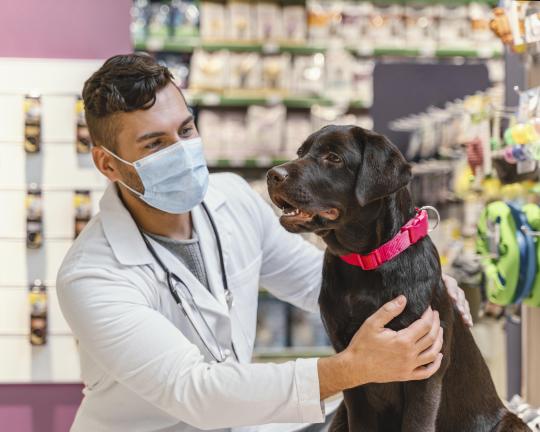
Animal Vaccines are biological preparations that provide active pharmaceutical immunity to animals against specific infectious diseases. These vaccines stimulate the animal’s immune system to recognize and combat pathogens such as viruses, bacteria and other microorganisms.
In 2022, the global Animal Vaccines market held a value of $9.44 billion. The market is expected to grow at a CAGR of 7.30% during the forecast period 2023-2033 and attain a value of $19.86 billion by 2033.
Grab a look at our report page click here !
Animal Vaccines Overview
Animal Vacciness are essential tools in modern veterinary medicine, designed to protect animals from a wide range of infectious diseases.
The development and use of Animal Vaccines have a profound impact on animal health, welfare, and productivity. In livestock, vaccines are crucial for preventing diseases that can lead to substantial economic losses due to reduced productivity, increased veterinary costs, and trade restrictions.
Animal Vacciness encompass a broad range of products, including those for common diseases like rabies, distemper, parvovirus, and leptospirosis in pets, as well as vaccines for foot-and-mouth disease, avian influenza, and brucellosis in livestock.
Key factors driving this expansion include
Pathogen Characteristics
Vaccine Technology
Immunization Protocols
Species Specificity
Grab a look at our sample page click here
Rising Demand for Animal Vacciness
Expanding Livestock Production: With global population growth and rising incomes, the demand for animal-derived protein products, such as meat, milk, and eggs, continues to escalate.
Emerging Infectious Diseases: The emergence and re-emergence of infectious diseases pose significant threats to animal health, agricultural productivity, and food security.
Market Segmentation
1 ) By Type
Livestock Vaccines
Bovine Vaccines
Small Ruminant Vaccines
Porcine Vaccines
Poultry Vaccines
Companion Animal Vaccines s
Canine Vaccines
Feline Vaccines
Equine Vaccines
(e) Aquaculture Vaccines
2) By Disease
Swine Fever
Foot and Mouth Disease
Newcastle Disease
Avian Influenza (Bird Flu)
Peste des Petits Ruminants
Other Diseases
3) By Technology
Live Attenuated Vaccines
Inactivated Vaccines
Toxoid Vaccines
Recombinant Vaccines
Conjugate Vaccines
Other Vaccines
4) By Route of Administration
Injectable Vaccines
Oral Vaccines
Intranasal/Spray Vaccines
5) By Distribution Channel
Veterinary Hospitals
Veterinary Clinics
Retail Pharmacies
Veterinary Research Institutes
6) By Region
North America
Europe
Asia Pacific
Middle East and Africa
Latin America
Key Players in the Market
Boehringer Ingelheim International GmbH
Ceva Santé Animale
Elanco Animal Health Incorporated
Merck & Co., Inc. (Merck Animal Health)
Zoetis, Inc.
Phibro Animal Health Corporation
Virbac
And many others
Visit our Life Sciences and Biopharma page click here !
Types of Animal Vacciness
Live Attenuated Vaccines
Inactivated Vaccines
Recombinant Vaccines
Vectored Vaccines
Conjugate Vaccines
DNA Vaccines
Major Trends and Drivers included are as follows
Increased focus on preventive healthcare
Emerging Infectious Diseases
Technological Advancements
Sustainable and Ethical Practices
Key Question Answers
Q What are the major market drivers, restraints, and opportunities within the global Animal Vaccines market?
Q What are the major trends adopted by the global Animal Vaccines market?
Q What are the key strategies adopted by key players in the global Animal Vaccines market?
Q How is each type segment of the global Animal Vaccines market expected to grow during the forecast period 2023-2033?
Q How is each disease segment of the global Animal Vaccines market expected to grow during the forecast period 2023-2033?
Conclusion
In conclusion, the Animal Vaccines Market plays a vital role in safeguarding animal health, enhancing animal welfare, and protecting human health. With increasing global demand for animal protein, growing awareness of zoonotic diseases, and escalating concerns about antimicrobial resistance, the importance of Animal Vacciness is more pronounced than ever before.
0 notes
Text
Counting the Costs: Economic Impact of Avian Coccidiosis
Avian coccidiosis imposes a substantial economic burden on the global poultry industry, with annual losses estimated at a staggering €10 billion. These losses are multifaceted, stemming from various factors that collectively contribute to the financial strain experienced by poultry producers worldwide. In this comprehensive analysis, we will delve into the intricate web of economic implications associated with avian coccidiosis, exploring its impact on productivity, treatment costs, market dynamics, and the urgent need for effective preventive measures and treatments. Avian coccidiosis, caused by obligate intestinal protozoan parasites of the genus Eimeria, remains a significant concern for poultry producers globally. Beyond its direct impact on bird health and welfare, the economic repercussions of coccidiosis reverberate throughout the poultry industry, affecting stakeholders at every stage of the production cycle. Understanding the economic dimensions of this disease is crucial for devising strategies to mitigate its impact and ensure the sustainability of poultry production systems. Factors Contributing to Economic Losses Decreased Productivity: One of the primary drivers of economic losses attributable to avian coccidiosis is the decrease in productivity resulting from mortality rates among infected birds. Coccidiosis-induced mortality not only directly reduces the number of birds available for sale but also disrupts production schedules and prolongs the time required to bring a batch of birds to market weight. As a result, poultry producers incur losses in terms of reduced revenue and increased production costs. Increased Expenses for Medication and Treatment: Another significant factor contributing to economic losses is the rising expenses associated with medication and treatment for coccidiosis. Anticoccidial drugs, which are commonly used to control the disease, represent a significant portion of the production costs for poultry farmers. Moreover, the development of drug resistance among Eimeria parasites necessitates the use of higher drug doses or alternative treatment options, further escalating expenses. Ripple Effects on Market Prices and Consumer Demand: The economic impact of avian coccidiosis extends beyond the farm gate, influencing market dynamics and consumer behavior. Coccidiosis outbreaks can lead to fluctuations in poultry supply, causing temporary shortages that drive up prices. Additionally, concerns about food safety and quality may arise among consumers in response to reports of coccidiosis outbreaks, leading to a decline in demand for poultry products. These ripple effects can have lasting consequences for the profitability of poultry producers and the stability of the poultry market. The Urgent Need for Effective Control Measures Given the significant economic losses associated with avian coccidiosis, there is an urgent need for effective control measures to mitigate its impact on the poultry industry. Preventive strategies, such as improved hygiene practices, biosecurity measures, and vaccination programs, play a crucial role in reducing the incidence and severity of coccidiosis outbreaks. Furthermore, ongoing research efforts aimed at developing novel treatment modalities and alternative control methods are essential for addressing emerging challenges, such as drug resistance and environmental concerns. For more information visit us:
0 notes